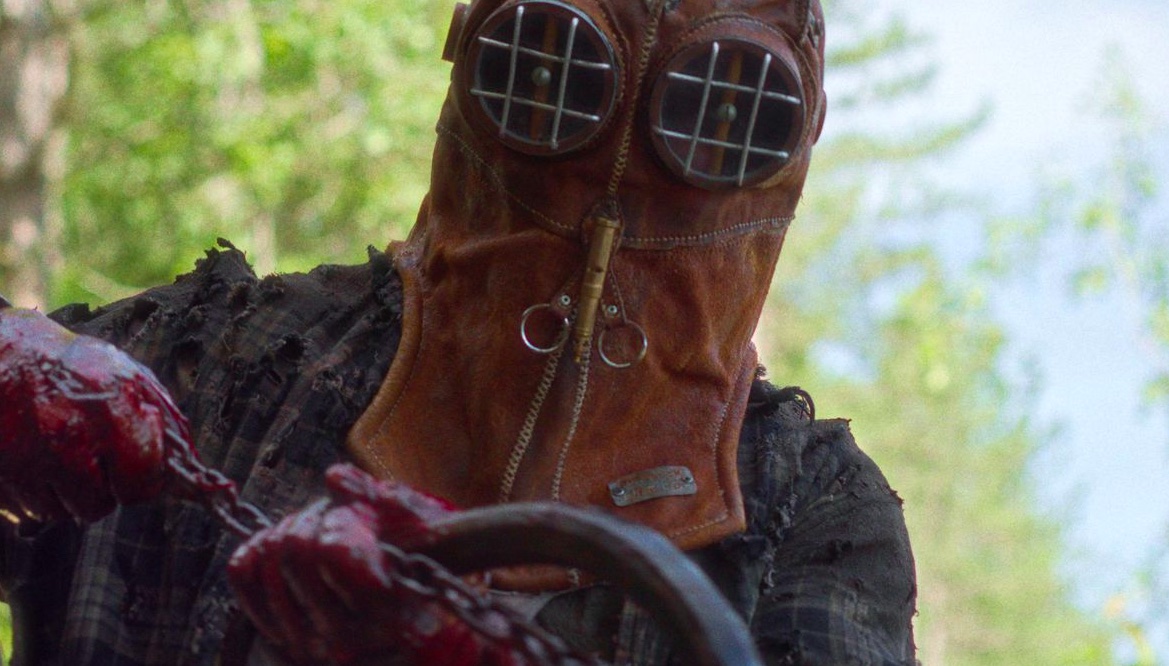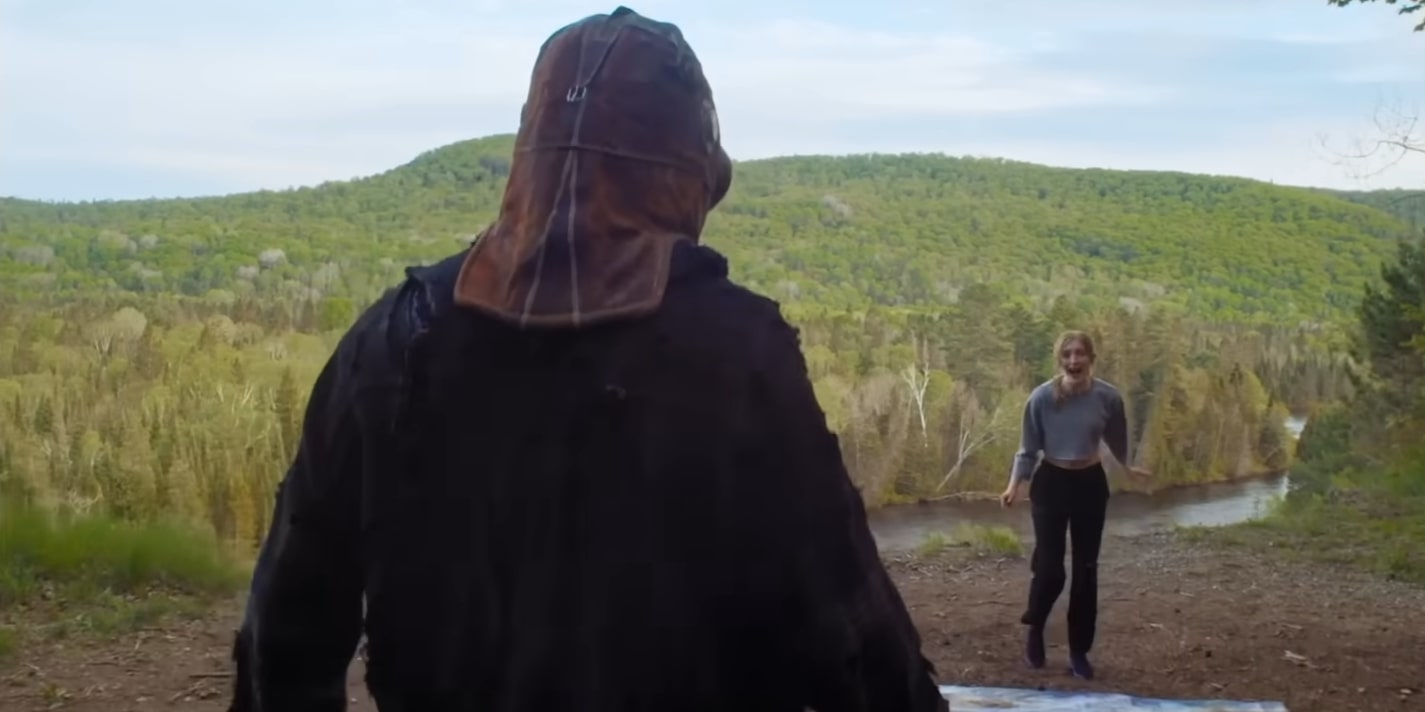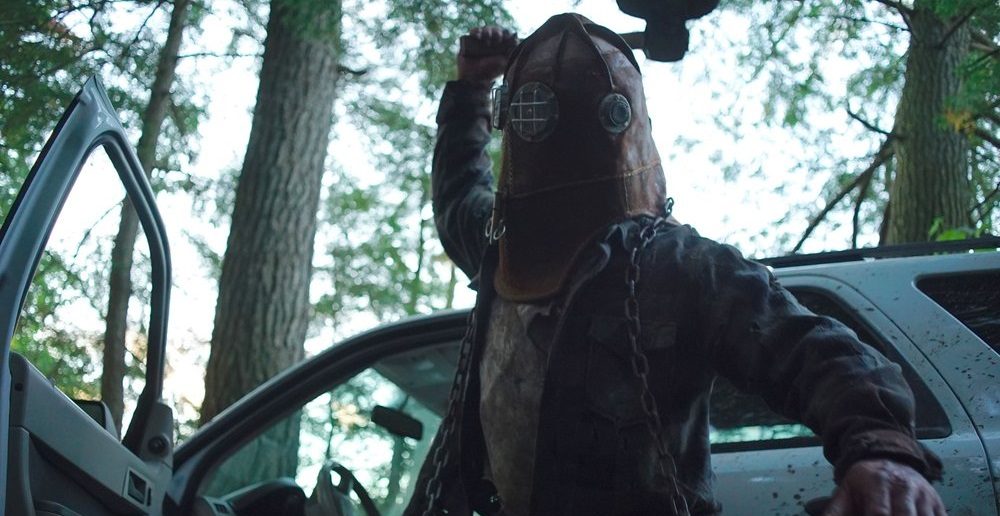Horror stories are generally captured from the perspective of the person experiencing the horror to get the audience into the same mind space. ‘In a Violent Nature,’ however, flips the perspective, putting the audience in the shoes of its brutal killer, Johnny, and making them squirm while he relishes killing innocent campers one by one. This approach makes quite a difference and is a fresh way to present the slasher genre, but it also raises a few questions about the main character. Despite following him for the entirety of the film, the focus is never on his face. We get to see his face once in the movie, and for the rest of it, he remains in a mask. The reason behind this choice is well-thought-out. SPOILERS AHEAD
The Director Didn’t Want the Audience to Empathise with Johnny

Evil begets evil. Johnny’s brutality in ‘In a Violent Nature’ is a result of the cruelty inflicted on him. In a prank gone wrong, he was killed by a group of loggers when he fell from a fire tower where they’d lured him with the promise of toys. When Johnny died on the spot, they left him there, covering his face with a firefighter’s mask. It makes sense then that when Johnny woke up from the dead, he decided to don a firefighter helmet, apart from the fact that it was readily available. The tragic story gives the audience a reason to empathize with Johnny. On top of that, when it is revealed that his killing spree is to retrieve his mother’s locket, it gives more reason for us to support Johnny, like we would support John Wick killing men to avenge his dog.
Having given the audience enough background on Johnny, writer-director Chris Nash wanted the audience to feel afraid of him and not relate to him. He wanted to make it clear that whatever humanity Johnny had is stripped away by death and time, and the creature we see is simply a killer. This point is driven home by the multiple instances where Johnny’s actions are compared to those of an animal, be it in the cover of the loggers’ slaughter or the bear story the woman speaks of at the end of the movie.
Another thing that Nash did to alienate Johnny from the audience was to connect him to the mask. We see his face once, but for the most part, the mask is what we see whenever the front comes into view. The use of the mask immediately puts the audience in the mindset of someone like Jason Voorhees or Mike Myers. We stop seeing his face, and whatever sense of humanity we attach to him is chipped away until, by the end of the movie, we forget his face and only remember the mask when his name is spoken of.

To enforce this point, actor Ry Barrett, who plays Johnny, studied animal videos, watching them walk, especially while hunting prey, to get that physicality into the character. If the mask and the obscurity of the face did the job of creating a mystery around Johnny, Barrett mimicking animals in Johnny’s gait reinforced the idea that Johnny is not human but something of an animal out of his mind who is not hunting for food or survival, but simply because he feels like it. There is no rhyme or reason for his kills.
If there was any doubt about it, the ranger reveals that simply getting the locket back is not going to stop Johnny. He needs to be “properly put down,” words generally used for an animal. Things like these prevent Johnny from turning into an anti-hero, with the savagery of each kill disgusting us so much that we hope the remaining characters survive so that we don’t have to see Johnny killing again.
Read More: In a Violent Nature: Is the Story Inspired By Reality?


You must be logged in to post a comment.